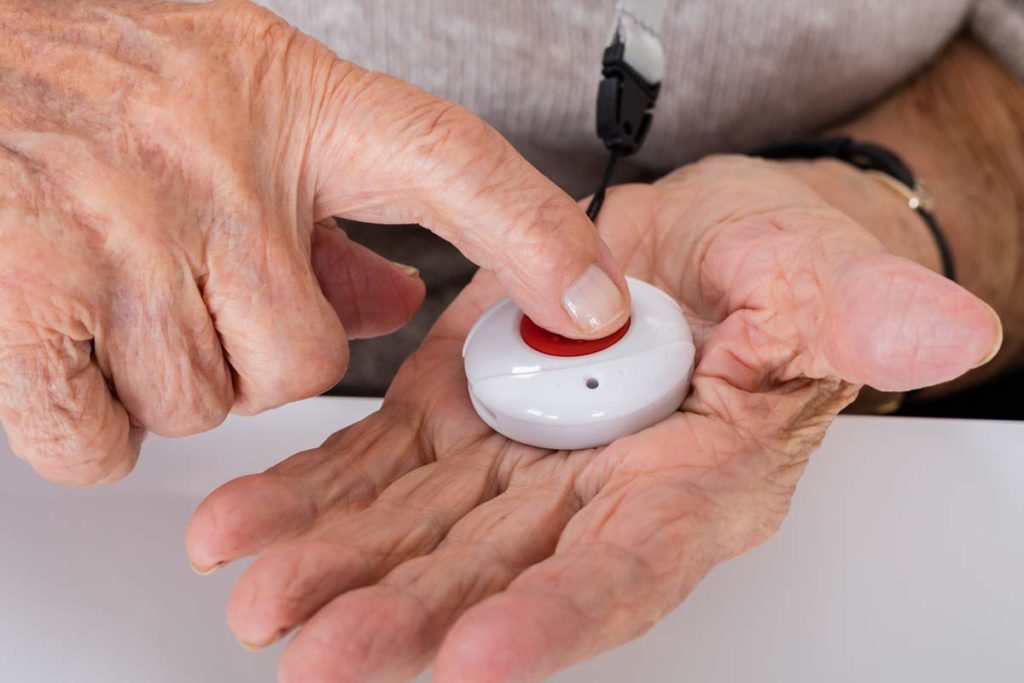Everyone has their own reasons for wanting to spend their remaining years in a familiar home setting – just as they may have their own reasons to leave it for a retirement community. But health and mobility concerns force the issue to become a priority for many families. Most seniors will eventually need some form of help with daily living activities – either in a community setting or in place at home. Sometimes conflicting desires not only pit parent against child, but spouse against spouse. All this calls for a respectful dialogue between family members and careful consideration of the financial, social, and medical ramifications of each decision.
Facts:
- About 90% of seniors intend to remain in their current homes for the next five to 10 years. Of these individuals, 85% are confident that they can stay in their residences without making significant home modifications.
- Of surveyed seniors who planned to age in place, the most popular reasons for their preferences were “to stay in a home I like” and “to be near friends and family.”
- 65% of seniors between the ages of 60 and 70 find it “very easy” to live independently. However, only 43% of those over 70 do so.
- Nearly two in 10 Americans aged 70 and older state that they either cannot, or find it difficult, to live independently and accomplish daily tasks without getting help from caregivers or community resources.
- Over 25% of seniors in their 60s say they are not confident that their communities will have the resources and services they need to lead a healthy and independent life over the next five to 10 years.
- Only half of seniors feel that their communities offer a high-quality public transportation system.
- 72% of low-income or moderate-income seniors report having a chronic illness.
- Fraudulent telemarketers direct anywhere from 56% to 80% of their calls at older adults.
- Nearly one in four seniors feel they cannot move either because they cannot afford moving costs or because do not believe they could sell their home.
- Senior-friendly home modifications can cost anywhere from $10,000 to $100,000.
- Visiting caregiver services run about $4,000 per month.
- The average monthly cost of assisted living is $3,750.
Older people enrolled in the Federal Housing Administration’s Home Equity Conversion Mortgage (HECM) program, which helps senior homeowners age in place by allowing them to access the equity of their homes as income.
Some older people — 21% of those aged 65 -74 and 18% of those aged 74 to 84 — own their homes outright and thus no longer have mortgage expenses. Others are enrolled in the Federal Housing Administration’s Home Equity Conversion Mortgage (HECM) program, which helps senior homeowners age in place by allowing them to access the equity of their homes as income.
Social Interaction

For seniors who want to stay put, the issue isn’t simply about control or staying within a comfort zone. They may want to enjoy a property on which they spent years investing time and money – a home they associate with many site-specific activities, holiday traditions, and fond memories. A private home makes it easy for family members to come and go freely at any time they wish. It also helps maintain other social relationships they care about in the immediate area, like neighbors and vendors. Frequent visits from children, grandchildren, and other relatives or friends is their idea of happiness.
Many seniors thrive on the camaraderie in a retirement community and find plenty of opportunities for solitude in a safe, secure setting.
Some people want their privacy when they want it. But as venturing outside becomes more and more difficult, the risk of social isolation and inactivity becomes real. For some older adults, the choice to age in place traps them – even if it is their wish to be there. New physical limitations or health conditions often mean they’re rarely leaving home. This makes it harder to keep in touch with old friends or cement relationships with new ones.
Assisted living communities have common areas to encourage socialization and regularly plan activities and outings for residents. Many seniors thrive on the camaraderie in a retirement community and find plenty of opportunity for solitude in a safe, secure setting. Other retirees have no desire to spend all day long around other older adults and are happy to simply visit a local senior center when they want to. These centers offer a variety of activities and changes to see old friends there and make new ones. If leaving is home is difficult, seniors or their caregivers may arrange for volunteers to visit or call periodically.
For any aging adult, retirement means losing regular interaction with co-workers and business associates. Family members and longtime friends die over the years. Assess how many friends and family members will be around for the long haul and whether a move to assisted living would increase social interaction or decrease it.
Emergency Planning

Consider whether a family member or very close friend is close by in case of an emergency. If this caretaker is a non-relative, the senior will not be a top priority in their life regardless of how close they are. Even very close friends may have their own families and responsibilities that limit their ability to help as often as necessary. Luckily, however, technology does enable today’s seniors to live independently for longer and stay connected with family and friends. Home sensors, personal navigational devices, and other communications offer new ways to stay connected and safe while a caregiver is not on hand.
Think through all contingencies – whether someone is physically close enough to check on the senior if they haven’t answered the phone, or if there is an emergency situation such as with the weather. If the senior is in the hospital or rehabilitation, they will need someone to watch their home and care for them once they’ve been discharged.
Be sure to plan for what would happen if the senior were to suddenly become ill and unable to speak. They’ll need to give someone they trust permission to discuss their healthcare with a physician and make necessary decisions. Learn about healthcare advance directives and consider obtaining a medical alert ID bracelet or necklace.
Self-Care

Some seniors’ cognitive abilities change without their realizing it. The care and direction they receive at an assisted living community may help them adjust surprisingly quickly. If they do want to remain at home, someone must be around to ensure that they are eating meals, bathing regularly, and dressing appropriately for the weather. If they forget to take medicine, you can use one of the devices available on the market to remind them when it is time for a dose. Special pillboxes allow them or someone else to set out pills for an entire week.
If they do want to remain at home, someone must be around to ensure that they are eating meals, bathing regularly, and dressing appropriately for the weather.
If they tend to forget doctors’ instructions, try to have someone accompany them to medical appointments. This person should write down all the advice or instructions they hear so that nothing is forgotten or missed. If the senior goes alone, they can ask the doctor to put all the information in writing in order to help.
Getting Around the House

Everyday chores can become burdensome, dangerous, or impossible when you don’t have as much energy as you once did. A senior may require a home health aide for light tasks, but they will still need to hire someone to mow the lawn, clear the gutters, and landscape the bushes. Mobile apps and digital marketplaces can enable a determined senior to get help around the house. However, coordinating with hired help and dealing with customer service issues will eventually fall on a family member’s shoulders.
On the other hand, assisted living won’t completely relieve spouses and adult children of responsibilities for overseeing how the senior is getting on. Regardless of the level of care, someone will need to observe their living environment and look out for your best interests. This may make a good argument for aging in place if you can work out the logistics.
This is where costs come in. A part-time home health aide may be far less expensive than an assisted living facility, but if round-the-clock supervision becomes necessary, it is no savings. Discuss with a doctor how chronic conditions like diabetes, osteoporosis, or emphysema could make self-care a challenge in the future. At a certain point, an assisted living community where there is security, provided meals, and other amenities may be more cost-effective. That said, one reason most older adults decide to age in place for as long as they can is that it is the most economical option for them.
Security

Is the senior’s neighborhood as safe as it was when they first moved there? Areas can always change over the years, making their home more vulnerable to crime. Also consider that older adults living at home are the target of scams and fraud. A home security system may help ensure a senior’s physical safety, but a responsible adult should be aware of what is going on in that person’s life.
Elderly people should never give out sensitive information like a Social Security number, credit card numbers, or bank account numbers unless they placed the call in the first place.
Seniors also need to be careful to avoid money scams. Elderly people should never give out sensitive information like a Social Security number, credit card numbers, or bank account numbers unless they placed the call in the first place. For further protection, a senior or their loved one should carefully check all their bills for charges they do not understand and evidence that a fraudulent charge might have occurred.
Home Modifications

A senior’s changing body and health needs may also necessitate changes to a home’s design or layout. Depending on future mobility issues, this can entail a variety of property modifications. The essentials include ramps for exterior stairs, widening doorways to accommodate walkers or wheelchairs, indoor threshold ramps for wheelchairs, adjustments of the kitchen countertop and sink, slip-proofing existing floors, and changing carpeting. As a rule of thumb, seniors should have safety rails and a bathtub transfer bench in their bathrooms, and they may also choose to install a walk-in shower or tub.
Do keep in mind that while you can maximize the safety in a home and yard, you can’t control the roads and sidewalks beyond the property line. Negotiating ice and potholes en route to a bus stop can lead to a devastating fall. A frequently-charged cell phone or other electronic device is a must for “out and about” excursions.
For retirees who can’t make needed changes on their property, assisted-living communities can offer a certain peace of mind. The buildings and restrooms are ADA-accessible, and professionals handle all maintenance and repairs.
Getting Around

If you live long enough, you will eventually reach a point where you can no longer safely drive. In this case, it can be difficult to secure rides to visit the doctor, let alone head to social outings. Most senior communities provide regular transportation for shopping and entertainment along with essential errands. But while most things are at-cost, sometimes a food delivery program, on-demand car service, nonprofit-operated transport service, or public transportation can help a senior live happily at home without transportation issues. If you or a loved one is disabled at any point, be sure to check your area’s public transportation authority for special van service options.
A food delivery program, on-demand car service, nonprofit-operated transport service, or public transportation can help a senior live happily at home without transportation issues.
Finances

If a senior is having trouble understanding financial forms like tax and insurance forms confusing, they can often get help from geriatric care managers, financial counselors, or local volunteers. Paying bills online – including rent, mortgage, and utilities – could also help streamline financial transactions. This can be setup through the bank.
If your loved one is beginning to have trouble with their finances, have the discussion for them to give you or someone they trust permission to discuss their bills with creditors. Furthermore, they’ll also need someone to discuss their Social Security or Medicare benefits with those agencies.
Independence

One paradox of assisted living options is that they can help older adults help themselves. Senior communities enable their residents to experience fulfilling lifestyle choices, including restaurant-style dining, social engagement programs, and discreet care – even if assisted living is part of that equation. Some researchers have found that when they controlled the demographic characteristics for health and function, seniors in assisted living communities went outside more than those living in their own homes.
Receiving services at home or in an institutional setting can play a large role in keeping it – or getting it back after an illness or disability.
Assisted living can be a freeing step for both older people and their families. Many who move into their communities realize that they’re living more independently now than they had been in their own home. They discover that independence is more than just living outside an institution. It is about choice, engagement, and the freedom to live a fulfilling life.
But in the end, the choice is their own. True independence involves control over your life and meaningful participation in the community. Receiving services at home or in an institutional setting can play a large role in keeping it – or getting it back after an illness or disability.
Which Is Right for You?

The decision where to live out your senior years is a deeply personal one. Whether to downsize when your last child leaves home is different choice from when you require more healthcare or personal assistance. A thoughtful cost-benefit analysis paired with open and honest communication about your needs can help you make the right choice for yourself, your spouse, and your family.
Do you want to cite this page? Use our ready-made cite template.
